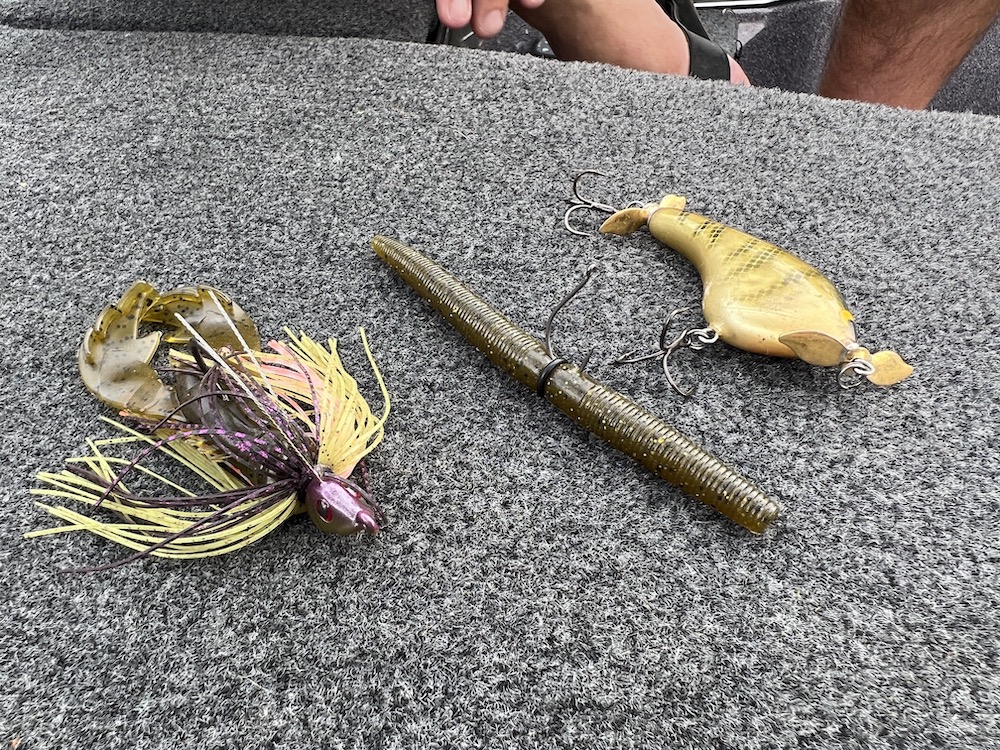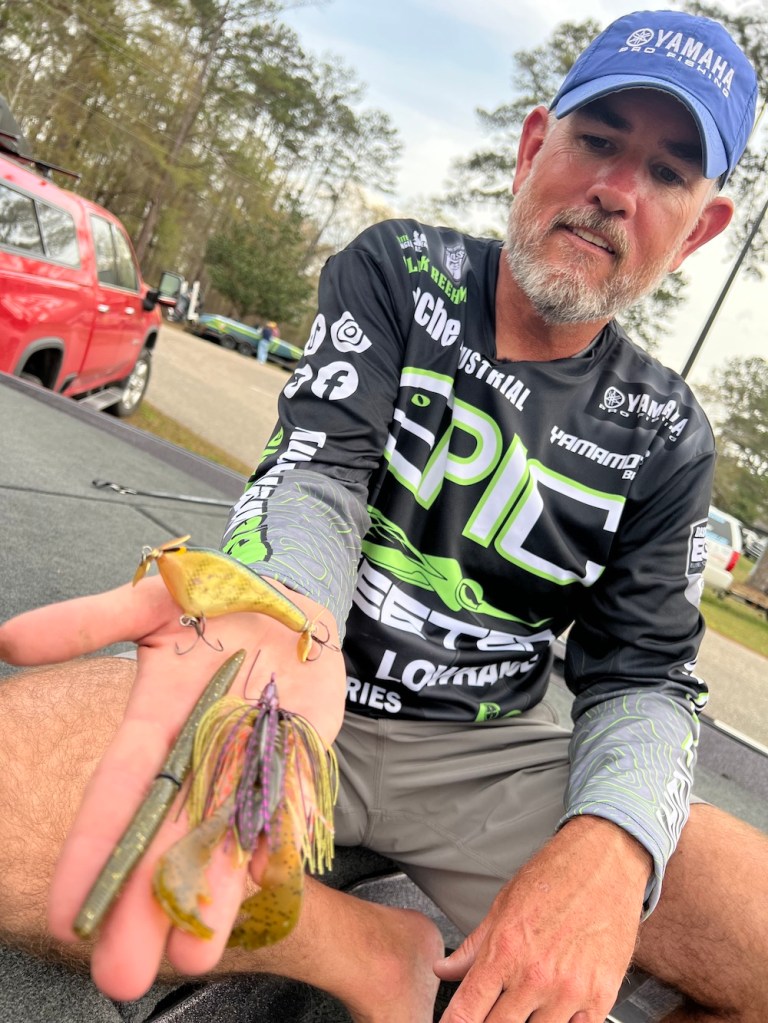
Bass fishing can become a bit grueling in the hot summer months. With the sun bearing down and the pleasure boaters plentiful, some anglers throw in the towel until the cooler fall comes a calling. But not a Bassmaster.
Here, we realize you’re dedicated and like to keep a hook in the water no matter the conditions. Knowing this full well, we decided to chat with Bassmaster Opens EQ angler Clark Reehm about fishing bream beds — one of the best ways to catch bass shallow in the summer.
“Whenever I’m doing a bream bed pattern, I have a three-way punch,” said Reehm.
This combination consists of a swim jig, topwater and wacky rig, in that order. Reehm uses these three baits to target bass relating to bluegill beds in shallow water along the shoreline and in the backs of pockets.
Swim jig
“I like to target bream beds because you can dial them in and run that pattern. But it takes looking. When I’m looking for them, I’m going to throw the swim jig.”
Using a 3/8-ounce Epic Baits Tournament Grade Swim Jig in bluegill color, trailed by a green pumpkin Yamamoto Yama Craw, Reehm will make long parallel casts down the bank.
“That’s a perfect bream imitator. And I’m able to just cover water with it, whether that be grass, open water or anything else.”
Reehm likes to start with the swim jig because he can fish it fast. Hopefully he intersects a bass relating to a bream bed while keeping his trolling motor on high as he looks for the beds with his eyes.
“When you’re casting ahead of the boat and you stick a fish, a lot of times, you’ll get up to where it was at and you’ll actually see the bream bed, at that point, if you haven’t visibly seen them already.”
Covering water like this is the best way to find bream beds, especially concentrations of them. This is critical in the summer as there may be several beds in one small area and miles of dead water in between.
“Especially in practice, it’s just chuck and wind. I’m covering water fast; I don’t run it low in the water column. I keep it high.”
Topwater
“Once I find several bream beds, I’m going to go through with a topwater plug. I like this Black Label balsa Tease. That’s what I’m actually going to throw over the bream beds once I’ve got them located.”
Swapping from the swim jig to the topwater, Reehm slows down his approach, twitching the bait across the bed with intermittent pauses.
“It’s target fishing at that point, and it doesn’t take many casts. Whether I see bass there or not, I’m going throw that Tease, because I can work it slow in the bed. They’re going to come find that topwater plug.”
One of Reehm’s favorite pastimes is actually bream fishing with his son, and targeting these panfish has taught him a lot about the behavior of the bass that are targeting them as well.

“A lot of times, you’ll see that bass sitting on that bed. And you think, “They’re everywhere, the food source is there, why don’t they eat?’ And it’s amazing how those bass don’t get triggered until I hook one of those bream. He’s going to see it start going crazy, and that bass will come out and try to attack that bream.”
Reehm admitted he’s tried more than once to coerce one of these bass into eating his hooked bream by discontinuing the fight and dragging the baitfish in front of the bass, but to no avail.
“What I’ve learned is, if I pull that bream to the surface and then it’s stuck to the top, that’s when the bass will typically hit.”
Reehm has seen similar situations play out when fishing for crappie, which has also shown him the powerful allure of a struggling small fish on top of the water.
“Whenever I’m catching crappie out of brushpiles and a bass follows it to the top, most of the time he’s not going to grab it at the boat. But if I make that crappie come up to the surface of the water, then he’s going to slap it, because those fish know that it can’t get away. It’s no different than a fish feeding on the bottom. They’ll feed on the surface the same way.”
Armed with this knowledge, Reehm uses his twin propbait to imitate an injured or fleeing bream along the surface to ignite that innate instinct in a bass to destroy the vulnerable prey.
“It imitates that injured bluegill more than anything else. It’s sitting there rolling and twitching and sitting still. And they’ll sit underneath that bait, and you don’t know what’s going to actually trigger that fish into biting, but they’re sitting there inspecting that bait. And that’s one of the few times I think color actually makes a difference with a topwater plug.”
Wacky rig
Once Reehm has located the beds with his swim jig and tricked any aggressive bass he can with the topwater, he’ll swap over to a finesse tactic before leaving each bed, to see if he can pick anymore fish off.
“My cleanup bait is an old wacky rig Senko. It’s one of the best extractors there is, because that Senko is so unobtrusive whenever it’s falling down there, that the bass are going to eat it when it falls in.”
Bass will often harass bream beds in small schools commonly referred to as wolf packs. These bass instinctively know to group up and hunt as a pack, just as wolves do. This increases the odds of each fish eating as a part of the group to a level unachievable alone.
“They’ll get fired up whenever one eats that topwater plug and that wolf pack will be in a frenzy at that point. And by throwing that wacky Senko in there that’s so unobtrusive, you’ll get those extra fish to slurp it down.”
This is the best three-bait combination for targeting bass relating to bream beds according to Reehm: swim jig, topwater, wacky rig.
“You’ve got the swim jig whenever you’re covering water looking for bream beds. You’ve got the topwater bait whenever you’ve got them located. Then make a cast or two with that Senko and roll to the next one. Cause if he’s there, he’s going to feed.”




